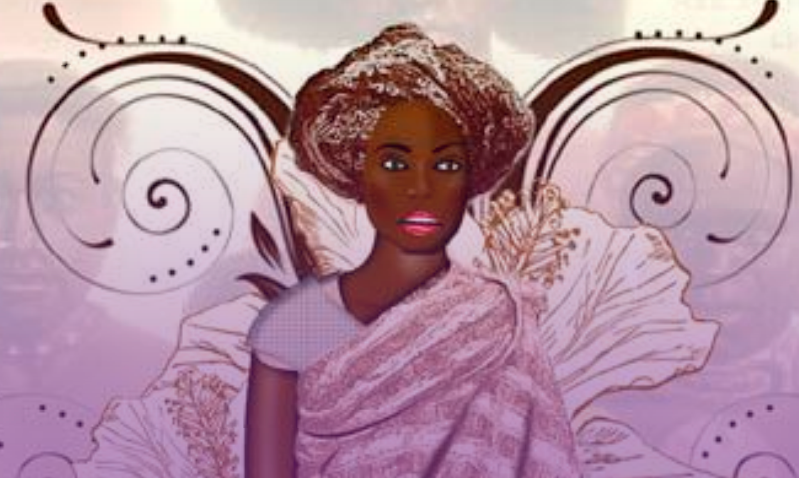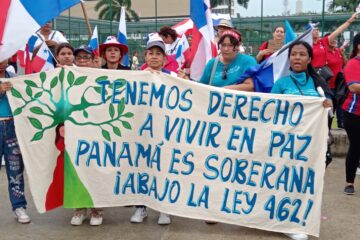Sic illa ad arcam reversa est (So she returned to the ark). This is the motto of the city of Salvador, Bahia, in northeastern Brazil. It refers to the episode described in the Bible about the dove that returned and let Noah know there was land for them to get off the ark after the deluge.
I’m here to provide an account—more than just a story. An account because it happened, because the episode is on the record. But this is also a piece of History—our History. One of the oppressors and of the oppressed. One of Eurocentric thought and of “Amefrican” epistemologies. A take from trans lives, which have been long erased, abused, and killed.
I offer truths, not necessarily yours, but of some people like yours truly. Truths are built, they take time to be acknowledged as such. First they are ridiculed, then rejected, then finally accepted. What you will do with this account and my brief reflections, that is up to you and you alone.
Xica in the City of Bahia
Back in 1592, in Salvador, the first capital of the country, then a colony of Portugal, there was an African woman from Congo who had been enslaved and sold to a cobbler. That was Xica Manicongo. Yet another Francisca [Xica is a short form for this given name] among so many who struggle unremittingly to survive amid the hatred and prejudice that surrounds us, yesterday and today.
Manicongo was originally a title of the rulers of the Kingdom of Congo (Mwene Kongo, literally Lord of Kongo), an alteration that later became known by the Portuguese as a term to describe people from the region. (Or was Xica a queen?).
Covered in a fabric that she tied with a front knot, as did Kimbanda1 practitioners of her Homeland, and despite the inhumane conditions imposed by white men, she walked loftily all around the city. She would come and go doing errands for her master or just strolling, even to meet her men. Xica was known for having many lovers. Even while facing the hell of slavery there were crevices, always dug up by Black people.
Xica in Time
That breath of freedom found by Xica, in dirty alleys and filthy houses smelling of oppression, bothered a man named Matias Moreira, an Old Christian2 who had moved from Lisbon. More than once he approached her in the middle of the street to tell her not to wear those clothes and start to wear “men’s clothes.” How many gender stereotypes do we still have in fashion—or worse, have we further developed since then?
She refused! Xica did not comply. She continued to be on the outside who she was on the inside, and she did not dress as something she was not.
What happened, however, is that the Inquisition paid its first visit to the region, called “visitation.” Matias Moreira was so wound up he reported her to the Church, and she was accused of sodomy3, a crime that was not limited to what we understand today as homosexuality or transness, but also included any practice deemed “nefarious,” even between married couples.
The penal code in effect at the time equated sodomy with a crime against the Crown. Someone who was found guilty should be burned alive in the town square. Their belongings were confiscated by the Catholic Church and infamy fell upon their descendants up to the third generation.
Try to imagine the horrific impact that such a conviction, of that degree, would cause on anyone.
Xica was labeled derogatorily as a “Kimbanda, a member of a gang of sodomite sorcerers.” In order to survive, she stopped dressing the way she liked and started to wear traditional men’s clothes accepted at the time…
In 1603, wearing clothes of a gender that was not the one socially assigned to you became illegal, except during festivities or games. The punishment was three years in exile for men and two for women, plus a fine to be paid to whoever reported them.
Xica Rediscovered by Her People
For centuries, when some footnote mentioned her when in a research paper investigating the denunciations of her time, Xica was called Francisco—her Christian name. She was addressed as a man until her story was reclaimed and she was acknowledged as the first travesti4 to be targeted by the Inquisition in Brazil. This acknowledgment is due to new times of social movements and studies that intersect gender and sexuality. Her preferred name—Xica Manicongo—was posthumously given by Majorie Marchi (1974-2016), a Black travesti activist who chaired the Rio de Janeiro Travestis and Trans People’s Association [Associação de Travestis e Transexuais do Rio de Janeiro—ASTRA-Rio].
To be aware of who we are, we need memory, we need knowledge about our history and where we came from, about what our people has struggled with and died for so that we could have the bare-minimum rights we enjoy today.
The ark of History has sailed forward. By the end of the 20th century, Xica Manicongo was still mistakenly addressed as being homosexual, which erased her travesti identity. This is explained by the limited information that was then available, and the fact that trans people are rendered invisible and silenced.
Trans people started to read about that Black woman from the turn of the 16th century. They related to her in her ways, her temper, and her boldness to face the cisgender norm. This intellectual undertaking was levered by taking on transfeminist thought and was realized by providing several new meanings to this historical figure.
Francisco. Francisca. Xica.
What was her name before she was called “Francisco” by the enslaving colonizers? That was lost in the accounting books that stifled her freedom.
Across time and space, there have been travestis. Not only in Ladeira da Misericórdia, but also in Fez, in the Tubinambá nation, in São Paulo de Luanda, in the Mojave Desert, in Goa… Even when they were still not called or called themselves travestis, they had other names for this affection that brings us together to this day: one in which we acknowledge ourselves when the cis-tem (or cistem5 ) denies us. A guerrilla of being.
It took a 20th-century travesti to name Xica in the 21st century. A crossing.
Xica Returns
SerTransNejas6. In 2017, in Rio de Janeiro, I meet them and we protest against yet another case of transfemicide in Brazil—against Ceará-born Dandara dos Santos. A collective of trans artists — performers, singers, dancers, writers, cordelistas [authors of Cordel literature]: this is Coletivo Xica Manicongo, an art, cultural, militant, and activist movement. Its prolific production is trailblazing. It empowers trans people by promoting their key role as those who speak about themselves and the world by themselves. Their spoken and written words create new narratives, intertwine the sertão and the city, gender and tradition. Also in 2017, Coletivo das Liliths, a theatrical troupe based in Salvador, premiered the show “Xica,” referencing the historical character and what she represents.
So She Returned to the Ark
Xica is back in the scene and her town as a dove, to announce good news.
The 21st century is witnessing the reawakening of Xica. In the voices and writings of trans people, she is the anchor of this vessel that is intended to dock us into the long-craved harbor of something called “citizenship.” This is a vulnerable and rather inconsistent term, which for millennia has remained unattainable for groups that have been historically discriminated against… Citizenship is something we crave for, as we are not even considered “people.” Us, who struggle to have our womanhood acknowledged, a statute of our condition as women for trans women. Or as men for trans men.
Xica Manicongo is the message that reaches out to us from the past and teaches us: keep moving forward, because the fertile ground will be for trans voices—turned into words.
Building collective memories, we embrace and give new meanings to the historical character Xica Manicongo in the 21st century. This is a turning point of trans people’s consciousness regarding their history—and not only as a mere formal record of a given existence.
This rebuilding of history takes part in the building of other perspectives regarding the multiple experiences and lives of the transgender identity, rooted in the protagonism of this social group themselves, who apprehend their past, question the present, and build their own future.

This is a version of the article first published in Revista Docência e Cibercultura, v.3, n.1, Jan/Apr 2019.

Jaqueline Gomes de Jesus is a Psychology professor at the Rio de Janeiro Federal Institute [Instituto Federal do Rio de Janeiro—IFRJ) and the Human Rights, Health, and Cultural Diversity Department of the National School of Public Health of the Oswaldo Cruz Foundation [Departamento de Direitos Humanos, Saúde e Diversidade Cultural da Escola Nacional de Saúde Pública da Fundação Oswaldo Cruz—DIHS/ENSP/FIOCRUZ). A professor at the Graduate Program in History Education of the Rio de Janeiro Federal Rural University [Programa de Pós-Graduação em Ensino de História da Universidade Federal Rural do Rio de Janeiro—PROFHISTÓRIA/UFRRJ] and the Graduate Program in Bioethics, Applied Ethics, and Collective Health [Programa de Pós-Graduação em Bioética, Ética Aplicada e Saúde Coletiva—PPGBIOS/FIOCRUZ].
- A Bantu word meaning “inverted,” which also means “healer.” For Umbanda practitioners in the 20th century, it refers to a branch of their religion. [↩]
- “Old Christian” or “Pure Christian” were terms used to express prestige, designating Christians who were not previously Jewish and did not have Jewish ancestors. [↩]
- [3] Documents attesting Xica Manicongo’s existence were found due to extensive research conducted by Luiz Mott on the persecution against the so-called “sodomites” in Brazil. [↩]
- stis: people who experience female gender roles and who have been historically stigmatized and marginalized in Brazil. [↩]
- Word used especially by transfeminists to refer to the transphobic cisnormative system that operates to prevent the acknowledgment of trans people’s fundamental rights. [↩]
- Wordplay with the word “sertanejas,” in reference to the historically marginalized population of the sertão, the arid backlands of Brazil. [↩]




